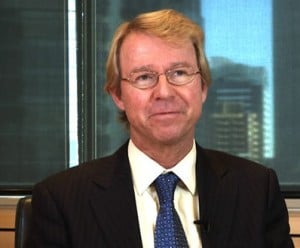Risk in investing means a lot of things to different people.
This could be the risk of capital loss; the risk of not having enough investment income or the risk of not having enough to last through retirement.
In an Oliver’s Insight, Dr. Shane Oliver, chief economist of AMP Capital, discusses the role that risk plays in investing.
Here’s what he said:
What is risk? 
Surely that is a stupid question as everyone knows what risk is when it comes to investing.
Investopedia (www.investopedia.com) defines risk as “the chance that an investment’s actual return will be different than expected”.
It’s actually quite a complex concept because it could mean different things to different people depending on their circumstances and tolerance to it.
And it can be highly perverse often being very different to what backward looking statistical measures and common sense might suggest.
But it’s worth thinking about because it can impact how you invest.
Volatility
The conventional approach to measuring investment risk is to look at volatility.
This is usually done with a statistical concept called standard deviation which shows how tightly clustered past returns have been around their average in a certain period.
The higher the standard deviation the greater the volatility.
The standard deviation of monthly returns based on very long term data for major asset classes is shown in the next table.

Source: Global Financial Data, Bloomberg, AMP Capital
A basic idea in investments is that the higher the volatility (or risk) the higher the return should be over time as investors need to be compensated for taking on additional risk.
If more risky assets do not offer this then their prices will fall until their prospective returns do.
From the standard deviation and return assumptions, statistics on things like the chance of a negative year for an asset or fund can be calculated.
However, to get a real handle on risk there is much more involved than this.
The risk of capital loss
What really concerns investors is not the volatility to the upside (as most of us like stronger returns) but capital loss. 
Various attempts have been made to measure the risk of capital loss.
However, it’s not clear that these are much better than standard deviation.
More fundamentally there are several problems with simple statistical measures.
First, standard deviation and related measures of risk are backward looking and when measured over short periods can give a misleading picture as to the potential for capital loss.
This is because during solid periods for returns markets tend to be relatively stable and so measured volatility and hence risk looks low.
And vice-versa during bad periods.
For example, the next chart shows the rolling 12 month standard deviation of US shares against the US share market.

Source: Bloomberg, AMP Capital
It can be seen the standard deviation often indicates high risk when the market is low after a big fall and low risk when it’s high.
This is around the wrong way.
The risk of capital loss actually rises as markets go up and goes down as they fall.
Trying to manage a fund based on such backward looking indicators is about as sensible as driving a car through the rear view mirror (unless you look at them as contrarian indicators).
Second, the risk regarding an asset can be perverse and radically different to what the statistics show and common sense would suggest.
The well-known corporate bond investor Howard Marks is reputed to have once said that “there is nothing riskier than the widespread perception that there is no risk”.
This usually comes after a period of strong returns, when economic and profit growth is solid and those investors who want to invest have.
Perhaps the best way to demonstrate this is with one of my favourite charts – what Russell Investments called the roller coaster of investor emotion.

Source: Russell Investments, AMP Capital
During a bull market ‘optimism’ gives way to ‘excitement’, ‘thrill’ and eventually ‘euphoria’ as investors push the asset class up in value.
It’s at this point investors are most bullish and most confident and relaxed.
The reality though is this is actually around the point of maximum financial risk.
That’s because it’s at this point that the market has become overvalued and with the crowd fully on board everyone who wants to buy has and so it only takes a bit of bad news to tip the market down.
On the flip side after a bear market when shares have become cheap and investor sentiment has collapsed to ‘depression’, the market will then reach the point of minimum risk and maximum opportunity. 
It then usually only takes a bit of good news to tip the market higher.
Unfortunately, this is the point when both statistical measures and common sense indicate risk is high.
A classic example of the latter was in 2009 at the end of the bear market driven by the GFC.
At this point statistical measures of risk were high (see the first chart), investors were scared and had retreated to cash and all the buzz was about the need to focus on capital preservation.
Of course history speaks for itself on this one as 2009 provided a huge investment opportunity after which followed very strong returns.
The way to get a handle of the risk of capital loss is therefore not to look at backward looking statistics but rather at forward looking indicators such as valuation measures and indicators as to how optimistic and invested the crowd is.
Maximum risk is when an asset is unambiguously overvalued and over loved.
Finally, when it comes to investing time is on your side as it smooths out short term risk.
For example, over rolling 12 month periods shares periodically have negative returns (since 1900 roughly two years out of ten are negative) and/or underperform cash.
But over 10 year periods this has hardly ever occurred and has never occurred over 20 year periods.

Source: Global Financial Data, Bloomberg, AMP Capital
The point is: when it comes to investing time is on your side.
Risk of insufficient income from investment
But sometimes it’s not really capital loss that should concern an investor but the risk that investment income falls short.
This is now a big issue for those who have been relying on income from bank deposits.
Bank deposits are safe, but the income they offer is not.
Four years ago the income on $100,000 in a three year bank term deposit was running around $6150 a year.
It’s now just $2750.
What happened?
The deposit is safe but the income has collapsed with interest rates.
By contrast, a $100,000 Australian investment in shares 4 years ago that was providing annual dividend income of $4300 (or $5600 with franking credits) is now providing an income of roughly $5350 ($6950 with franking) & the investment has risen to $122,000.
The next chart compares the annual interest and dividend income on $100,000 investments in Australian shares and one year term deposits in December 2000.
The annual dividend payment has trended higher over the period reflecting growth in the value of the share investment (to $166,000 by end last year) and relatively stable dividend yields over time.
By contrast the annual interest payment has fallen sharply reflecting the collapse in interest rates and the term deposit remaining at $100,000.
Of course if franking credits are allowed for annual dividend payments would be about 30% higher.
Because dividend yields are relatively stable over time and shares tend to rise in value over time shares can provide a stronger and somewhat smoother income flow than bank deposits.

Source: RBA, Bloomberg, AMP Capital
The same applies in relation to property rent. If diversified, it tends to be more stable than term deposit income and has growth potential.
Risk of not having enough in retirement
While investors may be focused on short term wiggles, they can be distracted from what should really concern them and this is the risk of not having enough to last through retirement.
We are living longer.
A few generations ago male retirees at age 65 had just 12 years on average to live.
Now it’s about 20 years and expected to stretch out further in the years ahead.
But not only are we living longer post retirement but we are having more healthy active years which need to be funded.
Against this backdrop there is a real danger that if we don’t have enough in growth assets our savings won’t provide sufficient growth and then ultimately income to last through our retirement years.
Wrapping up
The bottom line is that risk can mean different things – volatility, the risk of capital loss, the risk of not having enough income from your investment and the risk of not having enough in retirement.
Each of these risks can be of greater or lesser importance depending on your stage in life, how much capital you have and your tolerance for risk.
What’s more risk is perverse.
The risk of capital loss is often highest when you think it is low (ie after good times) and lowest when you think it is high (ie after a bad patch).
Trying to get a handle on this is critical to being a successful investor.
Dr Shane Oliver, Head of Investment Strategy and Economics and Chief Economist at AMP Capital is responsible for AMP Capital’s diversified investment funds. He also provides economic forecasts and analysis of key variables and issues affecting, or likely to affect, all asset markets.
Editor’s note: This article has been republished for the benefit of our many new readers

No comments:
Post a Comment